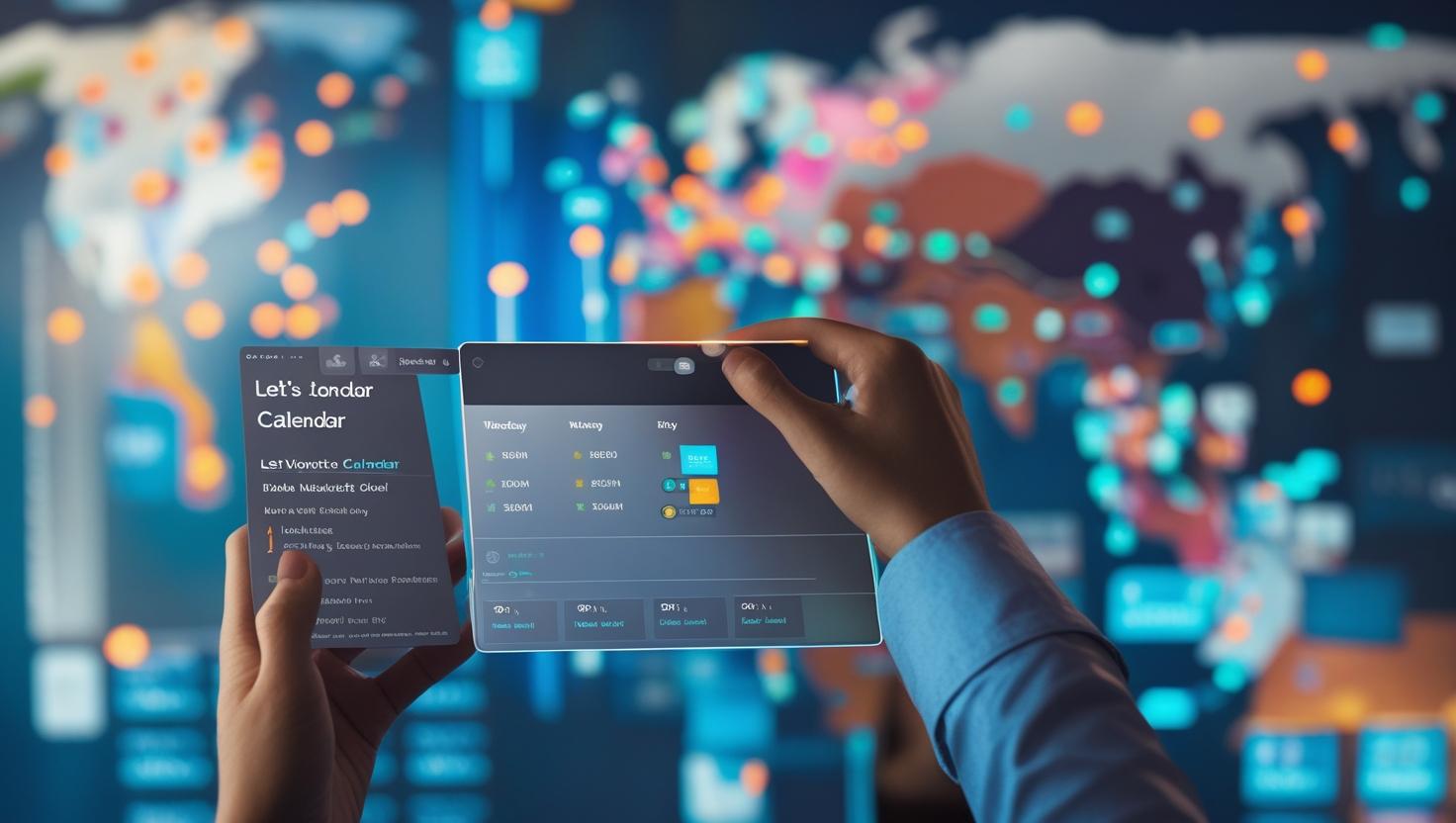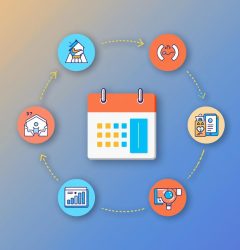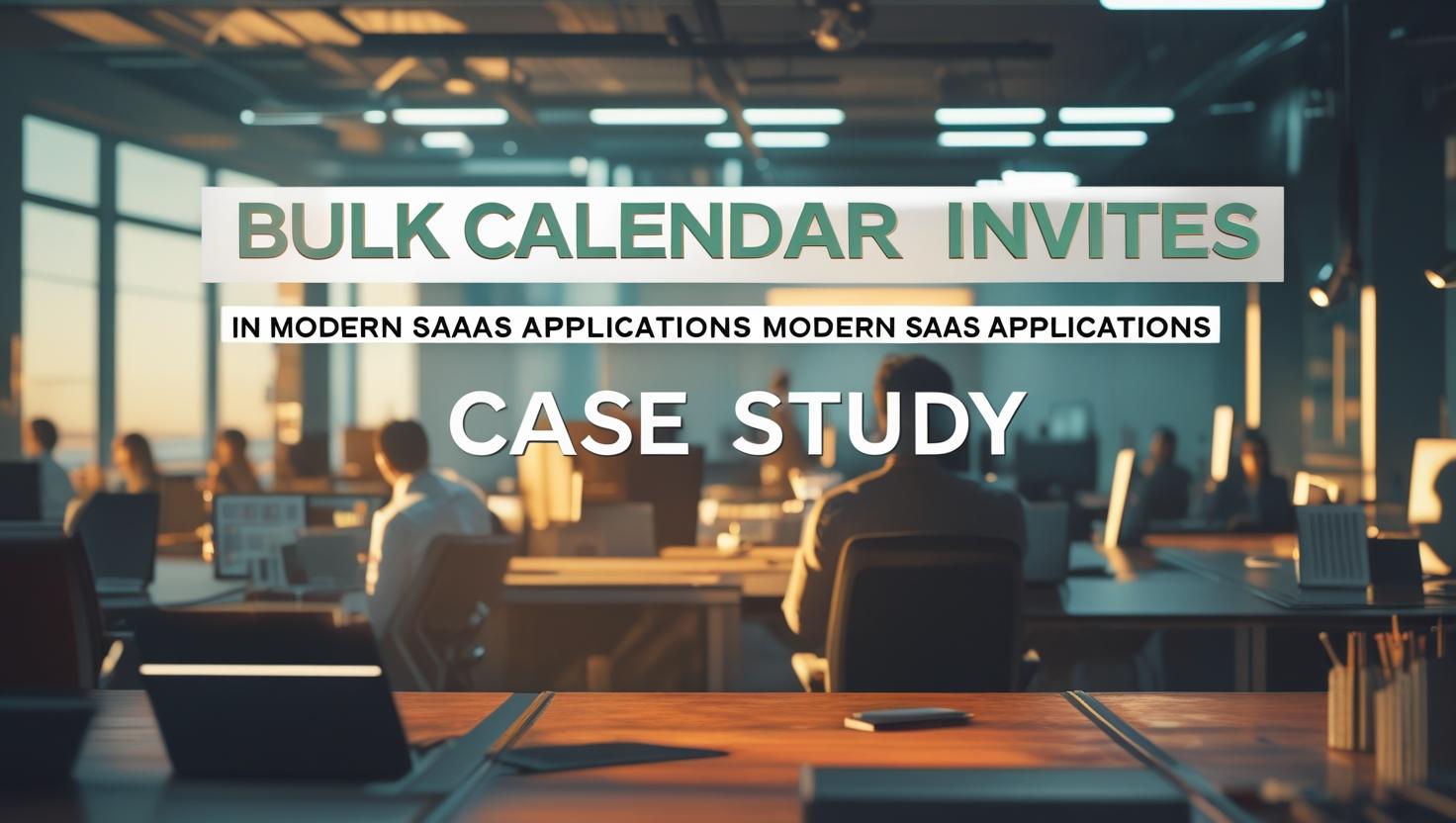- Email: [email protected]
- phone: +44 (0) 203 916 5117
25 Jun

Coordinating a global webinar, executive round-table, or multi-track conference shouldn’t feel like solving a Rubik’s Cube of time zones. Yet countless organizers still lose attendees to “Wait… what time is it for me?” chaos. This guide shows exactly how to conquer that problem—at scale—using Let’s Calendar, a browser-based platform built for discreet, personalized scheduling that lands perfectly on every recipient’s calendar with bulk meeting invites, no matter where they are.
The High Cost of Time-Zone Blind Spots
Late arrivals and no-shows dent sponsorship revenue, crush engagement scores, and tarnish brand credibility. Manually converting times—or worse, pasting a single zone into a mass email—introduces three common failure points:
|
Failure Point |
Real-World Impact |
|
Daylight-saving drift |
A “10 am EST” invite morphs into 9 am or 11 am for some markets, slashing live attendance. |
|
Copy-paste fatigue |
Human error creeps in when you duplicate sessions for 20+ regions. |
|
Email overload |
Even flawless plain-text invites vanish under inbox clutter, leaving attendees unaware an event ever began. |
Calendar-native invitations solve these issues automatically by reading the recipient’s device settings and adjusting start times on the fly.
Calendar-Native vs. Email Blasts
A calendar invite lives beside meetings people already care about, triggers built-in reminders, and updates itself when you change speakers or links. With the right tool, you can send bulk meeting invites without losing the granular control you need for VIPs, sponsors, and regional breakouts.
Traditional email reminders:
- Require manual conversion.
- Are easily missed among newsletters.
- Offer zero visibility into accepted/declined status.
Let’s Calendar turns every outreach into a single source of truth that Outlook, Google, Apple, and even enterprise firewalls respect.
Meet Let’s Calendar — Built for Scale & Subtlety
|
Core Capability |
What It Means for You |
|
CSV, CRM & Zapier import |
Move from spreadsheet to live invite in minutes—no IT ticket required. |
|
Discreet 1-to-1 merge fields |
Each attendee sees only their join link, table number, or VIP code. |
|
Automatic time-zone detection |
One master schedule, infinite accurate local times. |
|
Real-time RSVP tracking |
Watch accept/decline counts update second-by-second. |
|
Apple & Google Wallet passes |
Instant QR check-ins—no more paper badges. |
Whether you’re issuing a bulk calendar invite to 50 investors or send mass meeting invites to 50 000 registrants, the platform scales effortlessly.
Step-by-Step: From CSV to Calendar in Under 10 Minutes
- Import Your Audience
- Drag-and-drop a CSV or sync directly from HubSpot, Salesforce, or any of 5 000+ apps via Zapier.
- Drag-and-drop a CSV or sync directly from HubSpot, Salesforce, or any of 5 000+ apps via Zapier.
- Create the Master Event
- Pick your primary zone (e.g., UTC) and set duration.
- Add speaker bios, session tracks, or unique meeting URLs.
- Pick your primary zone (e.g., UTC) and set duration.
- Personalize at Scale
- Insert merge tags like {{First Name}}, {{Country}}, or a confidential door code.
- Insert merge tags like {{First Name}}, {{Country}}, or a confidential door code.
- Preview Localized Times
- Spot-check recipients in Tokyo, London, and São Paulo to confirm perfect conversion.
- Spot-check recipients in Tokyo, London, and São Paulo to confirm perfect conversion.
- Hit Send & Watch Live Metrics
- Your dashboard lights up with opens, accepts, tentative replies, and declines the moment it invites land.
You’ve now used Let’s Calendar to send bulk meeting invites spanning continents—with zero copy-paste errors.
How to Land on Every Major Calendar Platform
Google Calendar
Generate a direct link that opens Google’s event pane pre-filled with local start time, description, and conferencing URL. Attendees click once and the event appears alongside their existing schedule—no manual edits needed.
Outlook & Microsoft Teams
Need to send bulk meeting invite in Outlook? Let’s Calendar pipes individualized .ics files into an Outlook draft (desktop or web). One click later, thousands of recipients receive a native meeting that auto-adjusts for their locale and syncs with Teams if enabled.
Apple Calendar & iCloud
Let’s Calendar embeds VTIMEZONE blocks inside each invite, so Apple Calendar respects daylight-saving changes worldwide. iOS automatically surfaces a notification two hours before go-time.
Universal “Add” Buttons
Embedding registration pages? Drop in an addevent widget or add to event hyperlink. The script detects device type, serving the right file for Google, Outlook, or Apple in a single tap.
Pro Tip: Pair the HTML snippet with the phrase add calendar to event in confirmation emails to nudge late sign-ups who skipped the first step. It also satisfies the “add calendar” search intent audiences often use.
Gmail Power Workflow
With the Chrome add-on installed, you can send bulk meeting invite in Gmail directly from your primary inbox. Each recipient still receives a unique .ics and personalized merge fields, but you keep Gmail labels, stars, and company branding intact. Use filters to trigger automatic follow-ups if RSVPs don’t arrive within 48 hours.
Advanced Use Cases & Best Practices
|
Scenario |
Let’s Calendar Tactic |
|
Hybrid conference with 3 tracks |
Segment your list by interest tags; schedule Track A, B, C sessions in one project so recipients see only their chosen path. |
|
Board meeting under NDA |
Hide join link behind a merge tag that expires after the event starts. |
|
Rolling training cohorts |
Clone an event template, change the start date, and push to a new list—all branding and personalization stay intact. |
|
Crisis-time updates |
Edit the master event and click “Send Update”; every calendar entry refreshes without creating duplicates. |
These tactics also work when you must send multiple calendar invites for breakouts or rehearsal sessions.
Measure, Iterate, Perfect
The analytics dashboard highlights:
- Open Rate vs. Accept Rate — pinpoint subject lines that drive conversions.
- Time-Zone Heat Map — visualize global engagement to schedule encore streams.
- Reminder Efficiency — see how many accepts arrive after the first, second, or final notice.
Export data to CSV or feed it back into your CRM to score leads who opened but didn’t attend, ready for targeted remarketing.
Avoid These Common Pitfalls
|
Pitfall |
Fix |
|
Using a static “EST” label in body text |
Rely on {{local_time}} merge field so every recipient sees their zone. |
|
Forgetting daylight-saving transitions |
Let’s Calendar’s time-zone database updates automatically every quarter. |
|
Resending entire invites for minor tweaks |
Use the “Update” button to overwrite entries silently and preserve RSVPs. |
Security & Compliance Snapshot
- TLS Encryption for every message and attachment.
- Regional Data Hosting to align with GDPR, CCPA, and APAC regulations.
- Double Opt-Out links in every invite and reminder.
- Role-Based Access Controls so only the right staffers can edit master schedules.
The Bottom Line
Whether you need to send mass meeting invites for a public product launch or craft a bulk calendar invite for fifty C-suite stakeholders, failing to respect local time is no longer an option. Let’s Calendar delivers laser-accurate scheduling, private 1-to-1 personalization, wallet passes, and real-time analytics—all without forcing guests to download anything.
Ready to watch attendance climb and confusion disappear? Book a live demo of Let’s Calendar today and let the platform handle the clocks while you focus on content that wows.









Recent Comments